Best Time to Visit Baidyanath Jyotirlinga in 2025: Baidyanath Jyotirlinga, located in Deoghar, Jharkhand, is one of India’s most revered pilgrimage destinations. Sacred to followers of Shiva, the temple welcomes millions of devotees and travelers year-round, drawn by its deep spiritual significance and rich local traditions. Choosing the best time to visit Baidyanath Jyotirlinga ensures an experience that is both fulfilling and comfortable, letting visitors enjoy the rituals, festivals, and surrounding attractions at their finest.
Climate and Seasonal Overview
The climate at Baidyanath Jyotirlinga experiences distinct seasonal variations throughout the year, with hot summers, monsoon rains, and pleasant winters shaping the visitor experience. Deoghar sits at an elevation that experiences typical eastern Indian weather patterns, making timing crucial for a comfortable pilgrimage. The region receives moderate to heavy rainfall during monsoons, while summers can be quite intense with high temperatures and humidity levels.
Seasonal characteristics include:
- Summer (March to June): Hot and humid with temperatures soaring above 40°C
- Monsoon (July to September): Heavy rainfall with cooler temperatures and lush greenery
- Winter (October to February): Pleasant and comfortable with ideal conditions for temple visits
- Post-monsoon (October to November): Clear skies with moderate temperatures and festive atmosphere
Monthly Weather Overview
| Month | Average Temperature (°C) | Rainfall (mm) | Humidity (%) | Tourist Season |
|---|---|---|---|---|
| January | 12 to 25 | 15 | 55 | High |
| February | 15 to 28 | 20 | 50 | High |
| March | 20 to 35 | 25 | 45 | Moderate |
| April | 25 to 40 | 30 | 50 | Low |
| May | 28 to 42 | 50 | 60 | Low |
| June | 27 to 38 | 180 | 75 | Low |
| July | 25 to 32 | 300 | 85 | Moderate |
| August | 25 to 32 | 280 | 85 | Moderate |
| September | 24 to 32 | 200 | 80 | Moderate |
| October | 20 to 32 | 80 | 70 | High |
| November | 15 to 28 | 10 | 60 | High |
| December | 12 to 25 | 10 | 55 | High |
The peak tourist season runs from October through February when comfortable weather conditions align with major festivals like Diwali and Mahashivratri. Low season falls during April and May when extreme heat deters most visitors except the most devoted pilgrims.
Also Read: How to Reach Baidyanath Jyotirlinga
Best Time to Visit Baidyanath Jyotirlinga
Planning your travel to Baidyanath Jyotirlinga during the optimal months ensures you experience the temple’s spiritual essence without battling harsh weather conditions. The period from October to March stands out as the most favorable window for visiting this sacred shrine, offering pleasant temperatures, clear skies, and numerous religious festivals that add cultural richness to your journey.
Winter months provide the perfect backdrop for temple visits, allowing devotees to participate in early morning rituals and long queues without facing discomfort from heat or rain. The cool breeze and comfortable daytime temperatures make exploring the temple complex and surrounding attractions genuinely enjoyable. Additionally, the festive atmosphere during this period brings the town alive with special pujas, decorations, and cultural programs that enhance the spiritual experience.
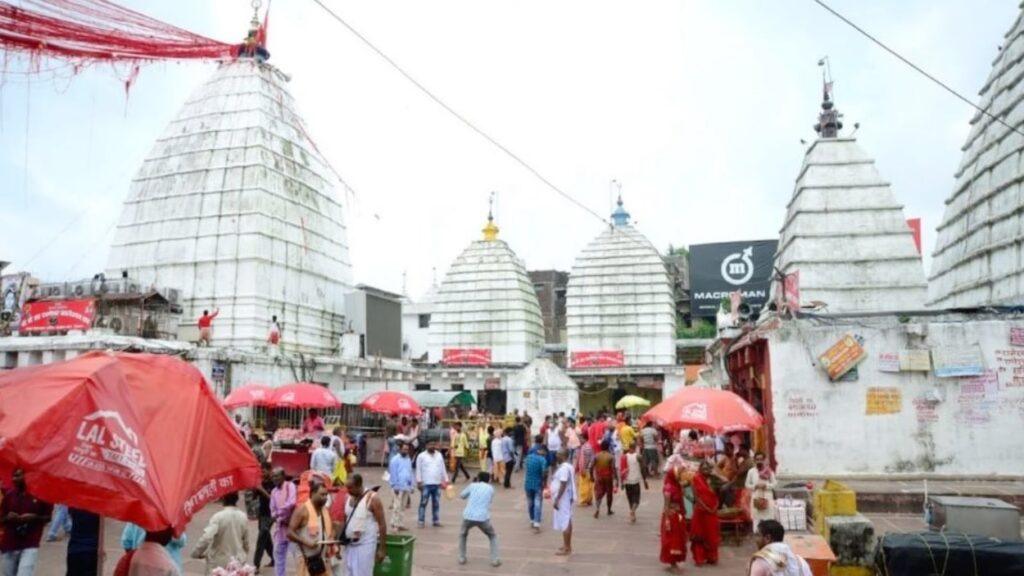
Best Months to Visit Baidyanath Jyotirlinga:
- February to March: This period offers ideal weather conditions with moderate temperatures ranging from 15°C to 28°C, making it perfect for temple darshan and outdoor activities. The celebration of Mahashivratri typically falls during these months, drawing massive crowds of devotees who come to offer prayers and witness grand celebrations at the temple.
- October to November: Post-monsoon freshness blankets the region with clear skies and comfortable temperatures between 20°C and 32°C, creating perfect conditions for pilgrimage. The festive season brings Diwali and Chhath Puja celebrations, adding cultural vibrancy to your spiritual journey.
- December to January: Cool and pleasant weather with temperatures dropping to 12°C at night makes this period excellent for those who prefer cooler climates. The winter months see fewer crowds compared to festival periods, allowing for more peaceful darshan and meditation time at the temple premises.
- July to August: Despite being the monsoon season, these months hold special significance for Shravan devotees who undertake the sacred Kanwar Yatra. The spiritual fervor reaches its peak as millions of pilgrims walk barefoot carrying holy water from the Ganges to offer at Baidyanath temple.
The ideal time ultimately depends on your preferences regarding crowds, festivals, and weather conditions. Spiritual seekers who value peaceful darshan should consider visiting during December or January, while those wanting to experience the temple’s festive grandeur should plan their trip around Mahashivratri or during Shravan month.
Things to Do in Each Season
Winter Season (October to February)
Winter presents the most comfortable period for exploring things to do in Baidyanath Jyotirlinga and its surroundings. The pleasant weather allows extended temple visits and exploration of nearby attractions without fatigue.
Key activities and experiences:
- Attend the early morning Mangala Aarti at 4:00 AM when the temple atmosphere radiates divine energy and devotional fervor
- Explore the Basukinath Temple located 42 km away, another important Shiva shrine connected to Baidyanath’s spiritual significance
- Visit Nandan Pahar, a scenic hilltop park offering panoramic views of Deoghar and recreational activities for families
- Participate in evening Sandhya Aarti and witness the beautifully illuminated temple complex glowing under the night sky
- Shop for religious artifacts, rudraksha beads, and local handicrafts at markets surrounding the temple area
- Experience traditional Jharkhandi cuisine at local eateries, savoring dishes like litti chokha and dhuska
- Take a heritage walk through Deoghar’s old quarters, discovering ancient temples and colonial-era architecture
Summer Season (March to June)
Summer brings intense heat to the region, requiring careful planning for temple visits. Despite challenging temperatures, devoted pilgrims continue their spiritual quests during this period.
Recommended activities:
- Plan temple darshan during early morning hours between 5:00 AM and 8:00 AM to avoid peak heat
- Visit Tapovan, a serene spot with natural hot springs believed to have healing properties
- Explore the Shravani Mela Museum showcasing the history and cultural significance of the famous Kanwar Yatra
- Spend time at air-conditioned accommodations near the temple premises during afternoon hours
- Attend special summer evening cultural programs organized at various venues in Deoghar
- Take short excursions to Trikut Pahar, accessible via ropeway, offering cooler temperatures at higher elevation
Monsoon Season (July to September)
The monsoon season transforms Deoghar into a lush green paradise while bringing the spiritually significant Shravan month. This period witnesses the famous Kanwar Yatra, making it the busiest time at Baidyanath Jyotirlinga.
Monsoon highlights:
- Witness the spectacular Shravan Mela and the influx of millions of Kanwar pilgrims carrying holy Ganges water
- Experience the heightened spiritual atmosphere with continuous chanting, devotional songs, and religious fervor
- Participate in Monday special pujas during Shravan, considered highly auspicious for Lord Shiva worship
- Enjoy the natural beauty of surrounding hills covered in fresh greenery after monsoon showers
- Taste seasonal delicacies and special prasad offerings prepared during this sacred month
- Visit during lighter rainfall periods to explore the rain-washed landscapes and waterfalls near Deoghar
Festivals and Events
The festivals in Baidyanath Jyotirlinga add tremendous cultural and spiritual value to any visit, transforming the temple into a vibrant center of devotion and celebration. Planning your trip around these events offers unique experiences and deeper insights into Hindu traditions.
Major Festivals at Baidyanath Jyotirlinga
| Festival | Approximate Time | Duration | Special Features |
|---|---|---|---|
| Mahashivratri | February/March | 1 Day | Night-long worship, lakhs of devotees, grand abhishek ceremonies |
| Shravan Mela | July/August | 1 Month | Kanwar Yatra, millions of pilgrims, continuous darshan, special decorations |
| Diwali | October/November | 1 Day | Temple illumination, special pujas, cultural programs |
| Kartik Purnima | November | 1 Day | Evening aarti, lamp lighting ceremonies, devotional gatherings |
| Shivratri (Monthly) | Every Month | 1 Day | Special abhishek, extended darshan hours, devotional atmosphere |
Festival highlights and visitor experiences:
- Mahashivratri stands as the most significant celebration at Baidyanath Jyotirlinga, attracting devotees from across India who queue for hours to offer bel leaves, milk, and flowers to Lord Shiva while maintaining an all-night vigil.
- The Shravan Mela transforms Deoghar into a sea of saffron as Kanwar pilgrims walking from distant locations create an unprecedented spiritual atmosphere that must be witnessed to be truly appreciated.
- Chhath Puja celebrations in November bring local cultural flavor, with devotees performing rituals at nearby water bodies and the temple premises buzzing with festive energy.
- Monthly Shivratri celebrations offer regular opportunities to experience special pujas and abhishek ceremonies on a smaller scale than the grand annual Mahashivratri.
The temple administration organizes special viewing arrangements, extended darshan hours, and cultural programs during major festivals. Advance planning becomes essential as accommodation and transportation get booked weeks in advance during peak festival periods.
Tips for Travelers
Visiting Baidyanath Jyotirlinga requires thoughtful preparation to ensure a smooth and spiritually fulfilling pilgrimage experience. These practical tips will help you navigate the journey with confidence and comfort.
Essential travel tips:
- Book accommodation well in advance, especially during festival seasons and winter months when availability becomes extremely limited
- Arrive at the temple early in the morning, preferably before 6:00 AM, to avoid long queues and experience peaceful darshan
- Dress modestly with covered shoulders and legs as a sign of respect in this sacred space, avoiding shorts, sleeveless tops, and revealing clothing
- Carry minimal valuables and use locker facilities available near the temple premises for safe storage of belongings
- Hire registered guides from official counters for authentic information about temple history and proper darshan procedures
- Respect local customs including removing footwear before entering the temple and maintaining silence in sanctum areas
- Stay hydrated and carry light snacks, especially during summer visits when heat can be exhausting
- Download offline maps as network connectivity can be unreliable in certain areas around Deoghar
- Keep emergency contact numbers handy including temple administration, local police, and your accommodation
- Consider visiting on weekdays rather than weekends to encounter smaller crowds and enjoy a more peaceful experience
Packing essentials:
- Comfortable walking shoes for temple complex exploration and extra socks for temple entry
- Light cotton clothing for summer, warm layers for winter nights, and waterproof gear for monsoon visits
- Basic first-aid kit with medications for common ailments like headaches, stomach issues, and allergies
- Reusable water bottle, energy bars, and dry fruits for sustenance during long queues
- Power bank and charging cables as electricity can be intermittent in some budget accommodations
- Sunscreen, sunglasses, and hat for protection during daytime temple visits and sightseeing
For more comprehensive guidance on planning temple visits, explore our detailed resources which covers various pilgrimage destinations across India.
Accommodation and Cost Considerations
Deoghar offers diverse accommodation options ranging from budget dharamshalas to comfortable hotels, catering to different preferences and budgets. Planning your stay strategically based on the season can significantly impact both availability and costs.
The area surrounding Baidyanath temple features numerous guesthouses, hotels, and dharamshalas within walking distance, making darshan convenient even during early morning hours. Government-run and trust-managed dharamshalas provide basic facilities at nominal charges, ideal for budget-conscious pilgrims seeking simple accommodations. Mid-range hotels offer better amenities including air conditioning, attached bathrooms, and in-house dining, while premium properties provide luxury experiences with modern facilities.
Approximate Accommodation Costs
| Accommodation Type | Low Season (April-June) | Peak Season (Oct-Feb) | Festival Period |
|---|---|---|---|
| Dharamshala/Budget | ₹200 to ₹500 per night | ₹300 to ₹800 per night | ₹500 to ₹1200 per night |
| Mid-range Hotel | ₹800 to ₹2000 per night | ₹1500 to ₹3000 per night | ₹2500 to ₹5000 per night |
| Premium Hotel | ₹3000 to ₹6000 per night | ₹5000 to ₹10000 per night | ₹8000 to ₹15000 per night |
Booking recommendations:
- Reserve accommodations at least 2 to 3 months in advance for winter season visits and 4 to 6 months ahead for major festivals like Mahashivratri and Shravan Mela
- Consider staying slightly away from the main temple area for quieter environments and potentially lower rates while still maintaining easy access via local transport
- Check online reviews and ratings before booking, focusing on cleanliness, proximity to temple, and quality of services offered
- Confirm booking details directly with the property a few days before arrival, especially during peak seasons when overbooking can occur
- Negotiate rates for extended stays as many properties offer discounts for bookings of three nights or more
Transportation costs remain reasonable with Deoghar well-connected by rail and road to major cities. The nearest airport is in Patna (approximately 270 km away) and Ranchi (around 250 km away), requiring additional road travel to reach Deoghar. Local transportation within the town includes auto-rickshaws, cycle-rickshaws, and taxis, with most temple area attractions accessible on foot.
Must Read: Best Places to Visit in Baidyanath Jyotirlinga
Determining the best time to visit Baidyanath Jyotirlinga ultimately depends on your personal preferences, spiritual goals, and comfort requirements. The winter months from October to February offer the most pleasant weather conditions with comfortable temperatures and clear skies, making them ideal for first-time visitors and those seeking a relaxed pilgrimage experience.
If you desire to witness the temple’s spiritual magnificence at its peak, planning your visit during Mahashivratri or the Shravan month immerses you in unparalleled devotional fervor despite larger crowds and higher accommodation costs.
Each season brings its unique charm to this sacred destination, from the festive vibrancy of winters to the intense spiritual energy of monsoon months. Understanding the climate patterns, festival calendar, and practical travel considerations enables you to craft a journey that aligns perfectly with your expectations and creates lasting memories of divine blessings.
Start planning your spiritual journey to Baidyanath Jyotirlinga today by researching accommodation options, booking transportation in advance, and preparing for an experience that transcends ordinary travel to touch your soul. Explore more comprehensive travel guides, pilgrimage tips, and destination insights to make your sacred journey truly unforgettable and spiritually enriching.
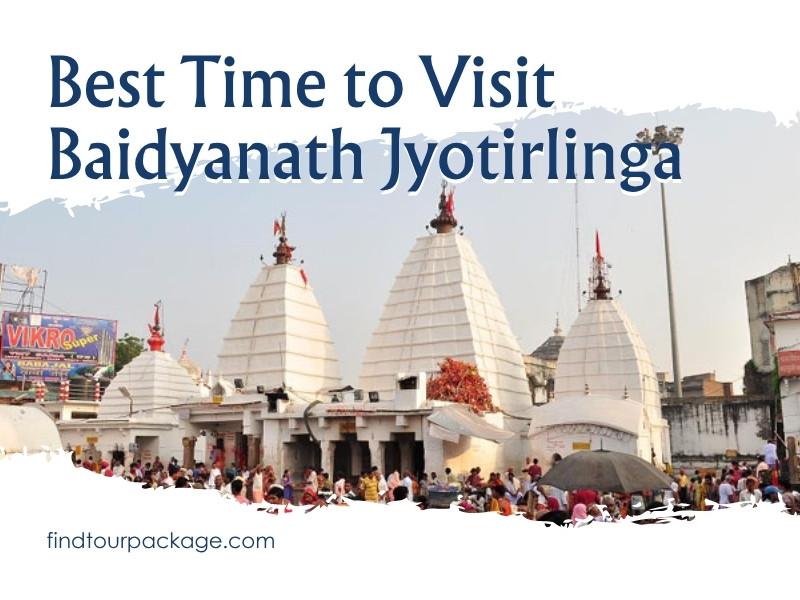



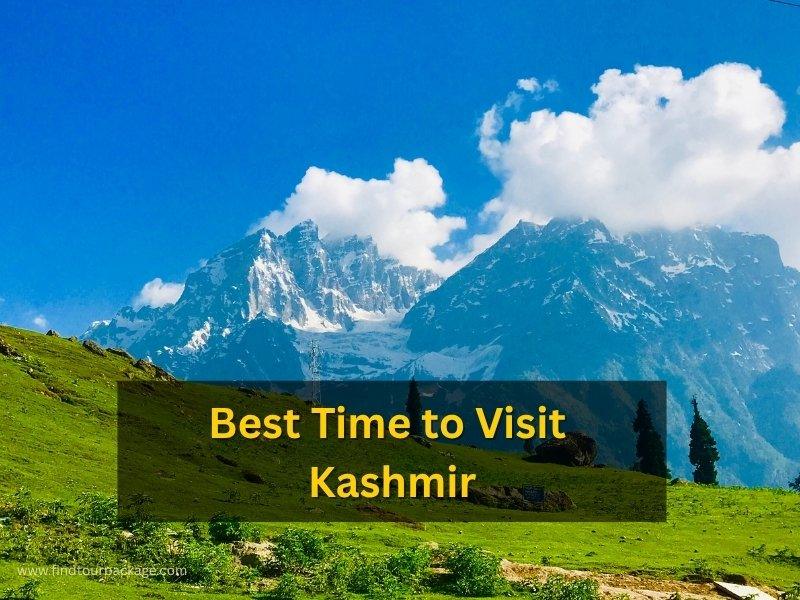
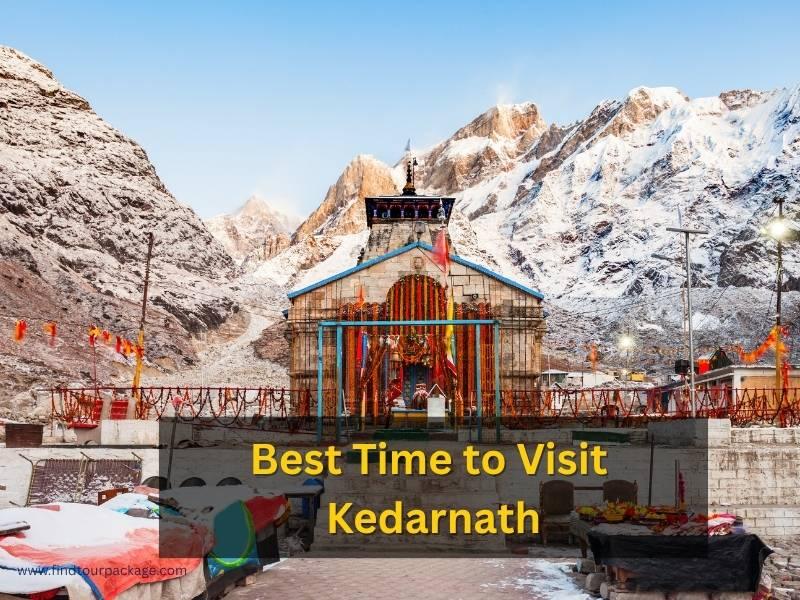




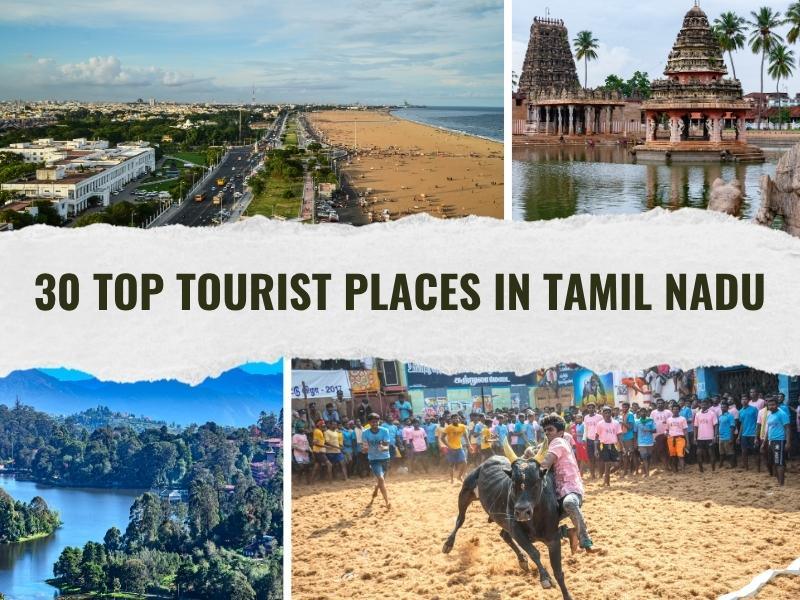



Leave a Comment